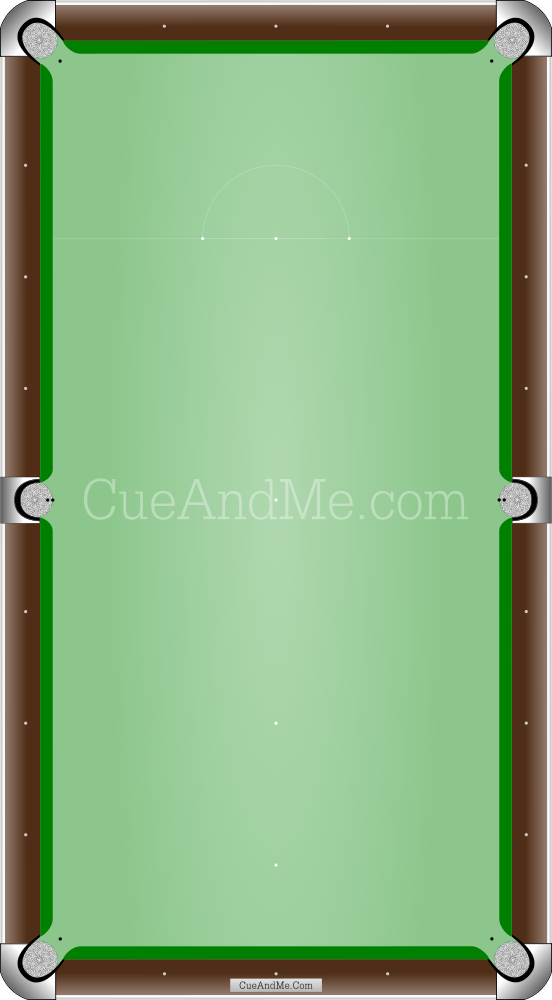Everything on the CueAndMe.com website is being freely shared with the sincere hope that those who find value in it will return to the Donate page above and donate what they feel is appropriate. Please help me to get the word out by sharing CueAndMe.com with other players.
Thank you, and enjoy!
INTRODUCTION
Hello and welcome to The Angle Detective System! What you’re about to learn began as a radical idea 11 years ago. In 2008 my game had reached a plateau. I was a decent player but frustrated that I hadn’t been improving. It was this frustration and my determination to improve that compelled me to abandon convention and start thinking outside the box.
I had always been a fan of geometry. It’s one of the main reasons I am drawn to pool and snooker—lots and lots of angles. But for some reason, 23 years of playing pool hadn’t burned those angles into my memory. The great players seem to have a special gift for angle recognition, and even if they never consciously think about the angles, they have a “feel” for them. For the majority of us, however, there seems to be something interfering with our angle recognition and retention.
Of course other factors such as eyesight, cue action, aiming and alignment must be in reasonably good shape to play well, but poor angle recognition seems to be a major impediment for most players.
Imagine having perfect eyesight, a perfect stroke, perfect recall of all aims that would correspond to all shot angles, and the ability to perfectly align your body, eyes and cue. Now imagine taking all of that perfection and bending into a shot on a table with moving pockets. For those who can’t feel or see the angles, the shot so perfectly prepared for is rarely the shot at hand, and confidence is lost with every perfect miss.
My angle recognition deficiency got me questioning whether the average human is equipped to precisely gauge angle measurements. Rather than forcing us humans to struggle and conform to conventional geometry, what if geometry could be made to conform to the particular talents of human perception? In other words, could we bend geometry to our will? And for the vitally important purpose of repeatedly sending little balls into dark holes?
And then I saw something. Something much easier for us humans to see and measure. Something that is all around us, showing up almost everywhere we happen to be. Something that is so simple yet so powerful.
So what is that something, you ask? Well, that something is…
…going to be revealed in detail on the next page, so please be patient.
The Angle Detective System... What is it?
I like to think of the Angle Detective system as more of a collection of many methods, each effective in its own right, than a system of one. But it can also be called a system, because there is a common thread that binds all of the methods together—the deep exploration of a carefully chosen geometric shape.
I used this shape to create the many methods currently in this system, but I am just one person viewing it from one perspective. I can only imagine what the many who learn, apply, and test the system will devise to add to what is already here. I encourage everyone to contribute their ideas to help the system grow.
The Angle Detective System... What is it not?
The Angle Detective system does not rain on others’ parades. It does not displace or disprove other teaching methods. It recognizes that there is room for all and that the more tools we can add to our toolkit, the better. It plays well with others.
Although it can be used as a primary training and playing system, it can also be used as a secondary method to double check your work. Or it can be used as a preliminary method to hone in on a very narrow range of shot selections before applying your primary method. Or it can be used simply for its printable precision practice tools.
The Angle Detective System... What does it do for us?
- It drastically improves shot angle recognition through novel methods.
- It labels, organizes and categorizes shot angles and aims for easy handling.
- Its labeling method opens up lines of discussion, allowing us to refer to any shot angle between 0° and 90° without the need to mention a degree measurement or even a number.
- It offers brand new ways to see and measure banks/doubles, caroms/cannons and combinations/plants.
- It shows us how to adjust for different cue ball to object ball proximity.
- It precisely measures cue ball post-collision paths.
- It shows us where the center of a pocket really is. Is it where you think it is?
- It teaches an odd but helpful new use for a simple cube of chalk.
- It presents brand new printable tools for reference, measurement and precision practice.
- If you don’t already love geometry you will, because the geometry it applies makes you a better player.
- It teaches how we can practice shot recognition no matter where we are—in a waiting room, in the shower, on a bus, or just staring at a brick wall.
- It makes spectating of a pool or snooker match more active and enjoyable, because it turns it into a practice session.
- It unveils geometric references that had always been right under our noses on the pool or snooker table that can be helpful during play.
- It shows us how to turn our hands into reference tools.
- It gives us a new way to measure the range of shots available for pocket cheating and obstruction avoidance.
- It offers brand new practice drills and practice games.
- And much much more!
The Angle Detective System Sections
The Angle Detective system is made up of three sections and begins with the Theory section. This section presents the geometry that is the foundation for the practical methods taught in the sections that follow. The Theory section essentially sets the stage for the Application section.
The Application section is where you’ll find all of the practical methods of the system that can be applied to your game. Although the system gets technical at times, the methods themselves are very simple to apply.
The final section is the Training section. The Training section is where you will be shown how to practice everything you learned in the Application section. This is where it all comes together and where the Angle Detective printable tools will be put to good use.
There is a lot to read and see—the equivalent of about 80 pages of text in addition to nearly 1,000 images so far. I tried my best to write, illustrate and organize it all in a way that should be easy to follow, but I realize that the full version may be overwhelming for many readers. So…
Abridged Version
For this reason I embedded an abridged version of Angle Detective within the full version. Simply scroll until you see the following images that mark:
the beginning…
![]()
and end…
![]()
…of an important region that shouldn’t be skipped.
Although I recommend that you return for the full version at some point, there are some pages that can be skipped entirely when learning the most essential topics. If you see the following “skip page” image at the top right of the page, you can click or tap the image to be taken to the next page.
![]()
These abridged version markers can also be used by readers of the full version as indications of the most important topics.
If anything is confusing, feel free to ask questions through the Contact page.
There will also be instructional videos on the CueAndMe YouTube channel in the near future, so if you have a YouTube account, please subscribe and stay tuned.
Don’t worry about memorizing everything presented. There are too many patterns and methods to remember, so I want you to think of the Angle Detective system as a repository to return to. Try a method or a few. When you’re ready to try a few more, come on back.
I think you’ll find that choosing and settling on even one of the many methods presented can improve your game.
The Angle Detective Printable Tools
Here are the new tools that accompany the Angle Detective system. They will be explained in detail later on, but feel free to download them now.
These new tools are specific to the Angle Detective system. They should not be confused with my other printable training tools which are available for download in the Training Tools section of the website.
Download the package for the game that you play.
Both packages include the same 8 Angle Detective tools in .pdf format. The only differences are the standard ball dimensions that were used in designing the tools for each game—57.15mm pool and 52.5mm snooker ball diameters. Therefore, downloading the package that does not match the game you play would yield inaccurate results!
Tool packages were updated November 15, 2019. A new reference aim tool was added to each.
The Pooker Table
The Angle Detective methods work for both pool and snooker, and since the tables of each sport are very similar in proportion, I figured I’d design a special table that incorporates features of both that can be used for all table diagrams throughout the system. It may not be the prettiest table you’ve ever seen, but it serves the purpose.

Black dots mark the centers of the pockets. You’ll understand why there are two black dots at each of the middle pockets after reading the topic on center-pocket locations at the beginning of the Application section.
All of the markings that are typically on pool and snooker tables are combined and positioned accurately on the pooker table. The only mark omitted is the pool head spot. The pool foot spot and the snooker pink spot occupy the same location.
The balls I use throughout the system appear to be snooker balls, but their proportion to the pooker table is slightly greater than the proportion of standard snooker balls to a standard 12 ft. snooker table. The ball diameter is essentially an average of the diameters of snooker and pool balls.
So that’s about all you need to know before knowing all the rest. It’s time to get started.
And off we go…

